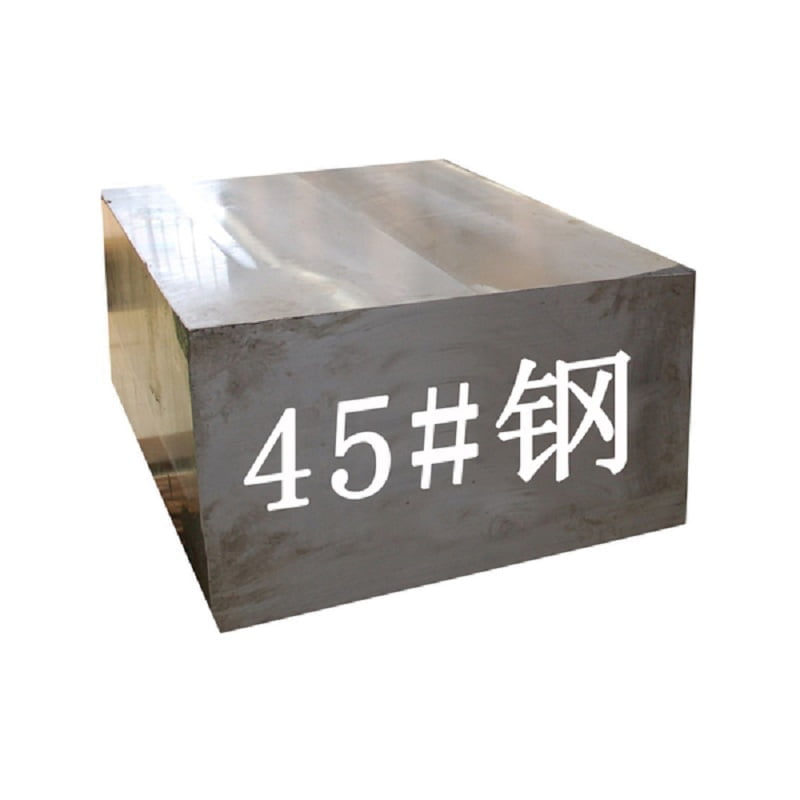
Introducción
S45C y S55C son grados populares de acero de carbono medio comúnmente utilizado en diversas aplicaciones de ingeniería y fabricación. Este artículo proporciona una comparación detallada de S45C y S55C, utilizando tablas para presentar sus composiciones químicas, propiedades mecánicas, respuestas de tratamiento térmico, aplicaciones y ventajas/desventajas para una mejor claridad y comprensión.
Composición química
La composición química de un grado de acero es crucial para determinar sus propiedades mecánicas y su idoneidad para aplicaciones específicas.
| Elemento | Composición de S45C (%) | Composición S55C (%) |
|---|---|---|
| Carbono (C) | 00,42% – 0,48% | 0.50% - 0.60% |
| Manganeso (Mn) | 00,60% – 0,90% | 00,60% – 0,90% |
| Fósforo (P) | 00,03% máx. | 00,03% máx. |
| Azufre (S) | 00,03% máx. | 00,03% máx. |
Explicación de la composición química
- Carbono (C): La diferencia principal es el contenido de carbono. S45C tiene un contenido de carbono de 0.42% - 0.48%, mientras que S55C tiene un rango ligeramente mayor de 0.50% - 0.60%. El mayor contenido de carbono en S55C mejora su dureza y resistencia.
- Manganeso (Mn): Ambos grados contienen una gama similar de manganeso, que es importante para desoxidar el acero y mejorar la enduribilidad.
- Fósforo (P) y azufre (s): Estos se consideran impurezas en el acero. Ambos grados tienen los mismos porcentajes máximos permitidos, lo que ayuda a reducir la fragilidad.
Propiedades mecánicas
Las propiedades mecánicas son críticas para determinar cómo funcionará un material bajo varios estresores.
| Propiedad | S45C | S55C |
|---|---|---|
| Límite elástico (MPa) | Aproximadamente 355 MPa | Aproximadamente 400 MPa |
| Resistencia a la tracción (MPa) | 570 – 700MPa | 650 - 800 MPA |
| Elongación (%) | 14% (mínimo) | 12% (mínimo) |
| Dureza (HB) | 170 – 210 HB | 190 - 230 HB |
Explicación detallada de las propiedades mecánicas.
- Fuerza de producción: S55C tiene una mayor resistencia de rendimiento que S45C, lo que significa que puede soportar un mayor estrés antes de deformarse.
- Fuerza de Tensión: La resistencia a la tracción de S55C también excede la de S45C, lo que lo hace más adecuado para aplicaciones que involucran una carga de carga significativa.
- Alargamiento: La alargamiento se refiere a la capacidad del acero para estirarse antes de romperse. S45C exhibe un mayor alargamiento, lo que indica que puede sufrir más deformación plástica.
- Dureza: S55C es generalmente más difícil que S45C, lo que contribuye a su mejor resistencia al desgaste.
Respuestas al tratamiento térmico
El tratamiento térmico puede influir en gran medida en las propiedades mecánicas de los aceros de carbono.
| Tipo de tratamiento térmico | S45C | S55C |
|---|---|---|
| Temple | Se puede endurecer a través del tratamiento con enfriamiento | Puede lograr una mayor dureza a través del enfriamiento |
| Templado | Reduce la fragilidad manteniendo la fuerza. | Mejora la dureza mientras retiene la dureza |
Explicación del tratamiento térmico
- Temple: Ambos grados pueden endurecerse mediante el enfriamiento, pero S55C, debido a su mayor contenido de carbono, tiende a lograr una mayor dureza después del enfriamiento.
- Templado: Después de enfriar, un proceso de templado puede mejorar la tenacidad y reducir la fragilidad potencial, lo cual es esencial para los componentes que deben soportar las cargas de impacto.
Aplicaciones
S45C y S55C se utilizan en varias aplicaciones en función de sus propiedades mecánicas.
| Solicitud | S45C | S55C |
|---|---|---|
| Engranajes | de uso común | Adecuado para engranajes de alto estrés |
| Ejes | A menudo usado | Utilizado en ejes de alto rendimiento |
| Piezas de la máquina | Piezas de ingeniería general. | Componentes que requieren mayor resistencia |
| Instrumentos | No se usa comúnmente | Aplicable para herramientas de corte y troqueles. |
| Componentes automotrices | A menudo usado | Aplicaciones críticas (por ejemplo, cigüeñales) |
Explicación de Aplicaciones
- S45C: Su fuerza y maquinabilidad equilibradas lo hacen adecuado para aplicaciones de ingeniería general, como engranajes y ejes.
- S55C: El mayor contenido de carbono se presta a las aplicaciones que exigen una mayor resistencia y dureza, como herramientas de corte y componentes automotrices de alto rendimiento.
Ventajas y desventajas
Tanto S45C como S55C tienen ventajas y desventajas únicas.
| Aspecto | S45C | S55C |
|---|---|---|
| Ventajas | – Buena maquinabilidad | – Mayor resistencia y dureza |
| – Rentable para aplicaciones generales | - Excelente resistencia al desgaste | |
| – Propiedades equilibradas | – Adecuado para entornos de alto estrés | |
| Desventajas | - menor resistencia en comparación con S55C | - Machinabilidad reducida |
| – Dureza limitada | – Mayor coste en comparación con el S45C |
Explicación detallada de ventajas y desventajas
- Ventajas del S45C: Su buena maquinabilidad y rentabilidad lo hacen adecuado para varias aplicaciones de ingeniería general.
- Desventajas del S45C: La menor resistencia y dureza pueden limitar su eficacia en aplicaciones de alto estrés.
- Ventajas S55C: La resistencia y la resistencia al desgaste mejoradas lo hacen adecuado para aplicaciones exigentes.
- Desventajas S55C: El aumento de la dureza puede hacer que sea más difícil para la máquina, potencialmente aumentando los costos de producción.
Conclusión
Elegir entre S45C y S55C requiere una consideración cuidadosa de los requisitos específicos de la aplicación. S45C proporciona un equilibrio de fuerza y maquinabilidad, lo que lo hace adecuado para el uso general de la ingeniería, mientras que la mayor resistencia y dureza de S55C lo hacen ideal para aplicaciones que requieren un rendimiento mejorado bajo estrés y desgaste. Comprender las diferencias en la composición química, las propiedades mecánicas, las respuestas al tratamiento térmico y las aplicaciones ayudará a los ingenieros y fabricantes a realizar selecciones de materiales informados adaptadas a sus necesidades de proyecto.
